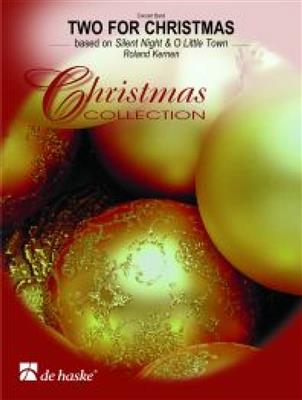Results
-
 £89.99
£89.99Blues Forever - Roland Kernen
The Blues is a well-known style of popular music. The name does not come out of thin air. After all, the term 'blues' refers to a state of mind: with the sentence 'I got the blues' someone means they are in low spirits. The blues originate in the melancholic music that the slaves in the southern United States made to relieve their depressing circumstances to some extent. This new concert work makes use of 'blue notes' (the flattened 3rd and 7th notes of the scale) which give this exciting work its blues sound.
Estimated dispatch 7-14 working days
-
 £84.99
£84.99The Last Rose of Summer - Traditional
The Last Rose of Summer is a popular Irish folksong. The original text was written by Thomas Moore (1779-1852) and the melody is a traditional air titled The Groves of Blarney. The German composer Friedrich von Flotow (1812-1883) cleverly used this song in his opera Martha, a light-hearted, successful work that is still regularly performed. The melancholy character of The Last Rose of Summer still appeals to many people in the present day and this arrangement by Wil van der Beek certainly does justice to the beauty of the melody. A wonderful item to change the mood of any performance.
Estimated dispatch 7-14 working days
-
 £137.99
£137.99Dublin Dances - Jan van der Roost
In Dublin Dances Jan Van der Roost has combined three well-known traditional Irish melodies to form an attractive medley. The medley contains Brian Boru's March, a melody made popular by worldfamous flautist James Galway, followed bythe atmospheric tune The Minstrel Man and, as a cheerful finale, The Irish Washerwoman. Add a little magic from the Emerald Isle to your concert with this rousing medley.
Estimated dispatch 7-14 working days
-
 £84.99
£84.99Was Gott tut, das ist Wohlgetan - Severius Gastorius
Roland Kernen has succeeded in creating a breathtaking arrangementof the well-known and popular chorale Was Gott tut, das ist wohlgetan.The song by Severius Gastorius, a cantor and composer in the Germantown of Jena in the 17th century, was inspired by the well-knowncomposers of the time including Pachelbel, Telemann and JohannSebastian Bach. A truly moving chorale which will make a great tranquilinterlude to any concert.
Estimated dispatch 7-14 working days
-
 £76.99
£76.99Two for Christmas - Roland Kernen
For this work in popular style, Roland Kernen uses two well-known Christmas melodies. In the introduction we hear O Little Town of Bethlehem, followed by a lively version of Silent Night. Subsequently, the attractive carol OLittle Town of Bethlehem is featured more extensively. Two for Christmas is a fine addition to your contemporary Christmas repertoire.
Estimated dispatch 7-14 working days
-
 £104.99
£104.99Rolling Stones Fantasy - Mick Jagger
Millions of fans will be delighted to hear that, after 40 years of collaboration and countless international tours, The Rolling Stones still have no intention of ending their career. The band's songs have united fans everywhere, be they new fans, old fans, young or old. Their most popular songs are the ones they wrote during the 60's and early 70's and it is from this unforgettable era that Peter Kleine Schaars has picked their greatest hits to form this mind-blowing medley.
Estimated dispatch 7-14 working days
-
 £94.99
£94.99Hollandse Hits
This medley is a colourful and creative foray into the pop music from our friends across the water in Holland. Peter Kleine Schaars combines four songs by four artists that have been popular both in Holland and beyond.
Estimated dispatch 7-14 working days
-
£104.99
The Third Man Theme - Anton Karas
Anton Karas grew up in a modest household in Vienna and became a self taught zither vituoso. He wrote the legendary Harry Lime Theme for the 1949 British film noir The Third Man. The melody became so popular, many people began calling The Third Man "The Zither Movie"! Toshio Mashima carefully turns this typically Viennese melody into a creative piece for concert band.
Estimated dispatch 7-14 working days
-
 £89.99
£89.99Classical Overture Die Forelle - Robert van Beringen
We proudly bring you another one of Robert van Berigen's spectacular arrangements of popular classical works, based on Franz Schubert's famous song, The Trout, Op. 32, composed in 1817. Schubert liked the melody so much he used it again in his Trout Quintet in 1819. This arrangement will both charm and delight your audience.
Estimated dispatch 7-14 working days
-
£104.99
Ungarische Tnze Nr. 5 & 6 - Johannes Brahms
Fascinated by the expressive power and spirit of the gypsy music from Hungary, Brahms used mainly traditional melodies in his Hungarian Dances as well as themes from compositions in similar musical styles. No. 5 and No. 6 are the most well-known of his Hungarian Dances and are popular as encores at the New Year's Concert of the Vienna Philharmonic.
Estimated dispatch 7-14 working days
